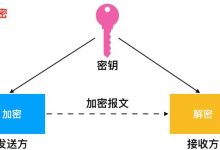Netty中的ByteBuf优势
NIO使用的ByteBuffer有哪些缺点
1: 无法动态扩容,ByteBuffer的长度是固定的,是初始指定的值,不能够再进行扩容了,当写入的内容大于ByteBuffer的容量时,会报越界异常
2.: API使用复杂,当要读取数据时,需要调用buffer.flip()方法,转换为读取模式,如果稍微不注意就可能出现错误,读取不到数据或者读取的数据是错误的
ByteBuf的优势和做了哪些增强
1: API操作起来更加的方便,可以直接写或者直接读
2:支持动态扩容,当写入的数据大于ByteBuf的容量时,会动态扩容,不会报错
3:提供了多种ByteBuf的实现,可以更加灵活的使用
4:提供了高效的零拷贝机制
5:ByteBuf可以内存复用
ByteBuf操作示例
ByteBuf操作
==ByteBuf中有三个重要的属性:==
1:capacity容量,初始指定的ByteBuf的大小
2:readIndex读取位置,顺序读的时候,记录读取数据的索引值
3:writeIndex写入位置,顺序写的时候,记录写入数据的索引值
==ByteBuf常用的方法:==
1:getByte和setByte,获取指定索引处的数据,是随机获取的,不会改变readIndex和writeIndex的值
2:read*,顺序读,会改变readIndex的值
3:write*,顺序写,会改变writeIndex的值
4:discardReadBytes,清除读过的内容
5:clear,清除缓冲区
6:搜索操作
7:标记和重置
8:引用计数和释放
简单的Demo示例
/*** ByteBuf的使用示例*/public class ByteBufDemo {public static void main(String[] args) {//分配非池化,10个字节的ByteBufByteBuf buf = Unpooled.buffer(10);//看下ByteBufSystem.out.println(\"------------------------原始的ByteBuf-------------------------------\");System.out.println(\"ByteBuf参数:\" + buf.toString());System.out.println(\"ByteBuf中的内容:\" + Arrays.toString(buf.array()) + \"\\n\");//写入内容到ByteBufbyte[] bytes = {1, 2, 3, 4, 5};buf.writeBytes(bytes);System.out.println(\"------------------------写入内容后的ByteBuf-------------------------------\");System.out.println(\"ByteBuf参数:\" + buf.toString());System.out.println(\"ByteBuf中的内容:\" + Arrays.toString(buf.array()) + \"\\n\");//从ByteBuf中读取内容buf.readByte();buf.readByte();System.out.println(\"------------------------读取一些内容后的ByteBuf-------------------------------\");System.out.println(\"ByteBuf参数:\" + buf.toString());System.out.println(\"ByteBuf中的内容:\" + Arrays.toString(buf.array()) + \"\\n\");//清除读过的内容//把读过的数据清除后,readIndex变为0,writeIndex变为3//后面尚未读取的内容,会复制到前面去,把原来的值覆盖掉//再次写入时,3,4,5后面的4,5会被覆盖掉buf.discardReadBytes();System.out.println(\"------------------------清除读过的数据后的ByteBuf-------------------------------\");System.out.println(\"ByteBuf参数:\" + buf.toString());System.out.println(\"ByteBuf中的内容:\" + Arrays.toString(buf.array()) + \"\\n\");//再次写入内容到ByteBufbyte[] bytesO = {6};buf.writeBytes(bytesO);System.out.println(\"------------------------再次写入内容后的ByteBuf-------------------------------\");System.out.println(\"ByteBuf参数:\" + buf.toString());System.out.println(\"ByteBuf中的内容:\" + Arrays.toString(buf.array()) + \"\\n\");//清空读和写的索引值//readIndex和writeIndex会重置为0,ByteBuf中的内容并不会重置buf.clear();System.out.println(\"------------------------清空读和写的索引值后的ByteBuf-------------------------------\");System.out.println(\"ByteBuf参数:\" + buf.toString());System.out.println(\"ByteBuf中的内容:\" + Arrays.toString(buf.array()) + \"\\n\");//再次写入内容到ByteBufbyte[] bytes2 = {1, 2, 3};buf.writeBytes(bytes2);System.out.println(\"------------------------再次写入内容后的ByteBuf-------------------------------\");System.out.println(\"ByteBuf参数:\" + buf.toString());System.out.println(\"ByteBuf中的内容:\" + Arrays.toString(buf.array()) + \"\\n\");//清空ByteBuf的内容//不会重置readIndex和writeIndexbuf.setZero(0, buf.capacity());System.out.println(\"------------------------清空ByteBuf的内容后的ByteBuf-------------------------------\");System.out.println(\"ByteBuf参数:\" + buf.toString());System.out.println(\"ByteBuf中的内容:\" + Arrays.toString(buf.array()) + \"\\n\");//再次写入超出指定容量的数据到ByteBuf//会进行扩容byte[] bytes3 = {1, 2, 3, 4, 5, 6, 7, 8, 9, 10, 11, 12};buf.writeBytes(bytes3);System.out.println(\"------------------------再次写入超出指定容量的数据后的ByteBuf-------------------------------\");System.out.println(\"ByteBuf参数:\" + buf.toString());System.out.println(\"ByteBuf中的内容:\" + Arrays.toString(buf.array()) + \"\\n\");}}
输出结果:

上面的例子是使用堆内的ByteBuf,下面看下堆外的ByteBuf例子:
//分配非池化,10个字节的directBufferByteBuf buf = Unpooled.directBuffer(10);//看下ByteBufSystem.out.println(\"------------------------原始的ByteBuf-------------------------------\");System.out.println(\"ByteBuf参数:\" + buf.toString());
directBuffer不能够使用array方法,否则会报错:java.lang.UnsupportedOperationException: direct buffer;而且使用ByteBuf是用它底层的分配器分配的,不是new一个出来,下面会具体说下。
上图中,可以看到,readIndex和writeIndex把缓冲区分成了三块,readIndex会小于或者等于writeIndex,这个应该好理解,我还没有写到那里,你就去读取了,能读取到什么呢。
堆内和堆外内存

socket是操作系统底层提供给上层应用使用的网络通信API,当要去读取或者写入的数据在JVM的堆中,那么就先需要把JVM堆中需要读取的数据拷贝一份到操作系统中,然后socket再去读取,而直接内存的好处是socket可以直接读取,少了拷贝这一步操作。
ByteBuf动态扩容
下面以堆内的ByteBuf为例,查看源码,分析ByteBuf的动态扩容:
动态扩容肯定是写入数据的时候,ByteBuf的容量不够了,才去扩容的,所以需要跟踪下面的代码:
buf.writeBytes(bytes);
跟踪上面的writeBytes,首先进入了ByteBuf这个抽象类中,进入了下面这个抽象方法:
public abstract ByteBuf writeBytes(byte[] src);
它的实现类如下:
进入第一个AbstractByteBuf的方法:
@Overridepublic ByteBuf writeBytes(byte[] src) {writeBytes(src, 0, src.length);return this;}
再次调用了下面的方法:
@Overridepublic ByteBuf writeBytes(byte[] src, int srcIndex, int length) {//检查是否可以写入ensureWritable(length);setBytes(writerIndex, src, srcIndex, length);//把当前的写入位置加上写入数据的长度writerIndex += length;return this;}
src是需要写入的数据,length是写入数据的长度
然后会进入ensureWritable方法,传入的参数是:写入数据的长度
@Overridepublic ByteBuf ensureWritable(int minWritableBytes) {//参数校验checkPositiveOrZero(minWritableBytes, \"minWritableBytes\");//检查容量是否可以写入这么多数据ensureWritable0(minWritableBytes);return this;}
//检查参数是否小于0public static int checkPositiveOrZero(int i, String name) {if (i < 0) {throw new IllegalArgumentException(name + \": \" + i + \" (expected: >= 0)\");}return i;}
参数校验完成后会进入ensureWritable0方法:
final void ensureWritable0(int minWritableBytes) {//确保缓冲区可以访问ensureAccessible();//如果写入的数据长度小于等于剩余可写数据的容量,就直接返回//就是说,容量足够写入,不需要扩容if (minWritableBytes <= writableBytes()) {return;}if (checkBounds) {//maxCapacity是int的最大值//检查写入的数据长度是否比可以写入的最大容量还要大//是的话就抛异常if (minWritableBytes > maxCapacity - writerIndex) {throw new IndexOutOfBoundsException(String.format(\"writerIndex(%d) + minWritableBytes(%d) exceeds maxCapacity(%d): %s\",writerIndex, minWritableBytes, maxCapacity, this));}}//正式的扩容方法int newCapacity = alloc().calculateNewCapacity(writerIndex + minWritableBytes, maxCapacity);//把扩容后的新容量设置进去capacity(newCapacity);}
进入AbstractByteBufAllocator类的扩容方法:
//常量 4Mstatic final int CALCULATE_THRESHOLD = 1048576 * 4; // 4 MiB page@Overridepublic int calculateNewCapacity(int minNewCapacity, int maxCapacity) {//校验参数checkPositiveOrZero(minNewCapacity, \"minNewCapacity\");//minNewCapacity = writerIndex + minWritableBytes//已经写入的数据索引加上当前写入的数据长度,就是需要的最小的容量//判断是否比最大容量还大,是的话就抛异常if (minNewCapacity > maxCapacity) {throw new IllegalArgumentException(String.format(\"minNewCapacity: %d (expected: not greater than maxCapacity(%d)\",minNewCapacity, maxCapacity));}final int threshold = CALCULATE_THRESHOLD; // 4 MiB page//如果需要的最小容量等于4M,就直接返回4M,作为扩容后的容量if (minNewCapacity == threshold) {return threshold;}//如果需要的最小容量大于4M,就按照下面的扩容方式扩容if (minNewCapacity > threshold) {//newCapacity = 15 / 4194304 * 4194304int newCapacity = minNewCapacity / threshold * threshold;//如果计算出的容量大于最大容量减去4M,就把最大容量赋值给新的容量if (newCapacity > maxCapacity - threshold) {newCapacity = maxCapacity;} else {newCapacity += threshold;}return newCapacity;}//如果需要的最小容量小于4M,就按照下面的方式扩容int newCapacity = 64;while (newCapacity < minNewCapacity) {newCapacity <<= 1;}return Math.min(newCapacity, maxCapacity);}
再看下capacity方法:
下面的把扩容后的容量放到ByteBuf,就是使用了arraycopy方法
@Overridepublic ByteBuf capacity(int newCapacity) {checkNewCapacity(newCapacity);int oldCapacity = array.length;byte[] oldArray = array;if (newCapacity > oldCapacity) {byte[] newArray = allocateArray(newCapacity);System.arraycopy(oldArray, 0, newArray, 0, oldArray.length);setArray(newArray);freeArray(oldArray);} else if (newCapacity < oldCapacity) {byte[] newArray = allocateArray(newCapacity);int readerIndex = readerIndex();if (readerIndex < newCapacity) {int writerIndex = writerIndex();if (writerIndex > newCapacity) {writerIndex(writerIndex = newCapacity);}System.arraycopy(oldArray, readerIndex, newArray, readerIndex, writerIndex - readerIndex);} else {setIndex(newCapacity, newCapacity);}setArray(newArray);freeArray(oldArray);}return this;}
下面是跟踪的代码步骤:
==总结下动态扩容机制:==
1:write*方法调用的时候,会通过ensureWritable0方法检查
2:calculateNewCapacity方法是用来计算容量的方法
==扩容计算方法:==
1:需要的容量没有超过4M,会从64字节开始扩容,每次增加一倍,直到计算出来的容量满足需要的最小容量,假如,当前大小是256,已经写入了200字节,再次写入60字节,需要的最小容量是260字节,那么扩容后的容量是64 2 2 2=512
2:需要的容量超过4M,扩容计算方法为:新容量 = 新容量的最小要求 / 4M 4M + 4M,假如当前大小是3M,已经写了2M,再写入3M,需要的最小容量是5M,那么扩容后的容量是 5 / 4 * 4 + 4 = 8M
图示1:需要的容量小于4M:
图示2:需要的容量大于4M:
ByteBuf有哪些实现
ByteBuf从3个维度,有8种实现方式:
ByteBuf类图

//堆内ByteBuf buf = Unpooled.buffer(10);//堆外ByteBuf buf = Unpooled.directBuffer(10);
ByteBuf提供了Unpooled非池化的类,可以直接使用,没有提供Pool池化的类,下面追踪源码看下ByteBuf是怎样分配的:
Unpooled.buffer分配方式
首先进入Unpooled类:
private static final ByteBufAllocator ALLOC = UnpooledByteBufAllocator.DEFAULT;//使用默认的分配器分配堆内bufferpublic static ByteBuf buffer(int initialCapacity) {return ALLOC.heapBuffer(initialCapacity);}
下面会进入接口类ByteBufAllocator:
//分配一个指定容量的堆内bufByteBuf heapBuffer(int initialCapacity);
然后进入AbstractByteBufAllocator抽象类:
//如果没有指定初始容量,默认的初始容量大小是256static final int DEFAULT_INITIAL_CAPACITY = 256;//最大容量,为int的最大值static final int DEFAULT_MAX_CAPACITY = Integer.MAX_VALUE;@Overridepublic ByteBuf heapBuffer(int initialCapacity) {return heapBuffer(initialCapacity, DEFAULT_MAX_CAPACITY);}@Overridepublic ByteBuf heapBuffer(int initialCapacity, int maxCapacity) {//如果初始化的容量是0,最大的容量也是0,就返回一个空的Bufif (initialCapacity == 0 && maxCapacity == 0) {return emptyBuf;}validate(initialCapacity, maxCapacity);return newHeapBuffer(initialCapacity, maxCapacity);}//校验参数private static void validate(int initialCapacity, int maxCapacity) {//检查参数checkPositiveOrZero(initialCapacity, \"initialCapacity\");//如果初始化的容量大于最大容量,就抛异常if (initialCapacity > maxCapacity) {throw new IllegalArgumentException(String.format(\"initialCapacity: %d (expected: not greater than maxCapacity(%d)\",initialCapacity, maxCapacity));}}
然后是newHeapBuffer抽象方法:
protected abstract ByteBuf newHeapBuffer(int initialCapacity, int maxCapacity);
因为这里初始化的是非池化的,所以会进入UnpooledByteBufAllocator类:
@Overrideprotected ByteBuf newHeapBuffer(int initialCapacity, int maxCapacity) {//PlatformDependent.hasUnsafe()是检查当前操作系统是否支持unsafe操作//根据支持与否,进入不同的类return PlatformDependent.hasUnsafe() ?new InstrumentedUnpooledUnsafeHeapByteBuf(this, initialCapacity, maxCapacity) :new InstrumentedUnpooledHeapByteBuf(this, initialCapacity, maxCapacity);}
支持Unsafe操作的进入下面:
InstrumentedUnpooledUnsafeHeapByteBuf(UnpooledByteBufAllocator alloc, int initialCapacity, int maxCapacity) {super(alloc, initialCapacity, maxCapacity);}
不支持Unsafe的进入下面这个:
InstrumentedUnpooledHeapByteBuf(UnpooledByteBufAllocator alloc, int initialCapacity, int maxCapacity) {super(alloc, initialCapacity, maxCapacity);}
现在以支持Unsafe操作往下面走,进入UnpooledUnsafeHeapByteBuf类:
UnpooledUnsafeHeapByteBuf(ByteBufAllocator alloc, int initialCapacity, int maxCapacity) {super(alloc, initialCapacity, maxCapacity);}
再次调用了父类UnpooledHeapByteBuf:
//分配器private final ByteBufAllocator alloc;//byte数组,ByteBuf数据底层就是使用这个存储byte[] array;public UnpooledHeapByteBuf(ByteBufAllocator alloc, int initialCapacity, int maxCapacity) {super(maxCapacity);//检查分配器是否为空checkNotNull(alloc, \"alloc\");//如果初始化的容量大于最大容量,就抛异常if (initialCapacity > maxCapacity) {throw new IllegalArgumentException(String.format(\"initialCapacity(%d) > maxCapacity(%d)\", initialCapacity, maxCapacity));}this.alloc = alloc;//设置当前的数组是分配之后的数组setArray(allocateArray(initialCapacity));//初始化readIndex和writeIndexsetIndex(0, 0);}//分配数组protected byte[] allocateArray(int initialCapacity) {//返回一个具有initialCapacity容量大小的byte数组return new byte[initialCapacity];}//set数组private void setArray(byte[] initialArray) {array = initialArray;tmpNioBuf = null;}
AbstractByteBuf类下的setIndex方法:
//初始化readerIndex和writerIndex@Overridepublic ByteBuf setIndex(int readerIndex, int writerIndex) {if (checkBounds) {checkIndexBounds(readerIndex, writerIndex, capacity());}setIndex0(readerIndex, writerIndex);return this;}final void setIndex0(int readerIndex, int writerIndex) {this.readerIndex = readerIndex;this.writerIndex = writerIndex;}
上面走到AbstractByteBuf后,就分配完了一个非池化、堆内的ByteBuf,下面是追踪的代码:
==总结:==
可以看到,分配一个非池化、堆内的ByteBuf,它的底层就是byte数组
Unpooled.directBuffer分配方式
首先进入的也是Unpooled类:
public static ByteBuf directBuffer(int initialCapacity) {return ALLOC.directBuffer(initialCapacity);}
然后进入ByteBufAllocator抽象类:
ByteBuf directBuffer(int initialCapacity);
然后到AbstractByteBufAllocator类:
@Overridepublic ByteBuf directBuffer(int initialCapacity) {return directBuffer(initialCapacity, DEFAULT_MAX_CAPACITY);}@Overridepublic ByteBuf directBuffer(int initialCapacity, int maxCapacity) {//如果初始化的容量和最大容量都是0,就返回一个空的Bufif (initialCapacity == 0 && maxCapacity == 0) {return emptyBuf;}//校验参数validate(initialCapacity, maxCapacity);return newDirectBuffer(initialCapacity, maxCapacity);}protected abstract ByteBuf newDirectBuffer(int initialCapacity, int maxCapacity);
由于分配的也是一个非池化的,所以newDirectBuffer会进入UnpooledByteBufAllocator类中的实现类:
@Overrideprotected ByteBuf newDirectBuffer(int initialCapacity, int maxCapacity) {final ByteBuf buf;//同样的,会判断是否支持unsafe操作if (PlatformDependent.hasUnsafe()) {buf = noCleaner ? new InstrumentedUnpooledUnsafeNoCleanerDirectByteBuf(this, initialCapacity, maxCapacity) :new InstrumentedUnpooledUnsafeDirectByteBuf(this, initialCapacity, maxCapacity);} else {buf = new InstrumentedUnpooledDirectByteBuf(this, initialCapacity, maxCapacity);}return disableLeakDetector ? buf : toLeakAwareBuffer(buf);}
以InstrumentedUnpooledUnsafeNoCleanerDirectByteBuf为例,后面两个其实也相差不大,进入UnpooledUnsafeNoCleanerDirectByteBuf类的构造方法:
UnpooledUnsafeNoCleanerDirectByteBuf(ByteBufAllocator alloc, int initialCapacity, int maxCapacity) {super(alloc, initialCapacity, maxCapacity);}
再次调用的父类UnpooledUnsafeDirectByteBuf:
ByteBuffer buffer;public UnpooledUnsafeDirectByteBuf(ByteBufAllocator alloc, int initialCapacity, int maxCapacity) {super(maxCapacity);if (alloc == null) {throw new NullPointerException(\"alloc\");}//校验参数checkPositiveOrZero(initialCapacity, \"initialCapacity\");checkPositiveOrZero(maxCapacity, \"maxCapacity\");if (initialCapacity > maxCapacity) {throw new IllegalArgumentException(String.format(\"initialCapacity(%d) > maxCapacity(%d)\", initialCapacity, maxCapacity));}this.alloc = alloc;setByteBuffer(allocateDirect(initialCapacity), false);}//分配的是一个NIO中的ByteBufferprotected ByteBuffer allocateDirect(int initialCapacity) {return ByteBuffer.allocateDirect(initialCapacity);}final void setByteBuffer(ByteBuffer buffer, boolean tryFree) {if (tryFree) {ByteBuffer oldBuffer = this.buffer;if (oldBuffer != null) {if (doNotFree) {doNotFree = false;} else {freeDirect(oldBuffer);}}}this.buffer = buffer;memoryAddress = PlatformDependent.directBufferAddress(buffer);tmpNioBuf = null;capacity = buffer.remaining();}
ByteBuffer类下面的allocateDirect:
public static ByteBuffer allocateDirect(int capacity) {return new DirectByteBuffer(capacity);}
代码跟踪图:
==总结:==
分配非池化、堆外的ByteBuf,可以看到底层是NIO的DirectByteBuffer实现的
ByteBufAllocator类图

ByteBuf内存复用
分配池化内存
在上面根据源码知道了怎么去分配非池化内存,那么池化内存要怎么分配呢?看下面的图示:
上面就是分配池化内存的步骤,接下来会根据源码具体分析
内存缓存池

jemalloc内存分配机制
1:内存池中有三大区域,分别是:tiny、small、normal
2:每个区域分了不同大小的格子,每个格子只能缓存对应大小的内存块
3:支持最大的格子内存是32kb,超过这个大小的不能被缓存,只能被释放掉
4:每个类型的格子都有对应的数量:tiny:512个,small:256个,normal:64个,例如tiny区域的每个大小的格子都有512个,如果满了就不会被回收,内存会被释放掉
回收池化内存

分配池化内存的过程
上面分析了分配非池化内存,下面看下怎么分配池化内存:
ByteBufAllocator allocator = ByteBufAllocator.DEFAULT;//分配的内存最大长度为496ByteBuf buf1 = allocator.ioBuffer(495);System.out.printf(\"buf1: 0x%X%n\", buf1.memoryAddress());//此时会被回收到tiny的512b格子中buf1.release();//从tiny的512b格子去取ByteBuf buf2 = allocator.ioBuffer(495);System.out.printf(\"buf2: 0x%X%n\", buf2.memoryAddress());buf2.release();
先来看下ByteBufAllocator类:
//默认ByteBuf分配器,在ByteBufUtil中初始化ByteBufAllocator DEFAULT = ByteBufUtil.DEFAULT_ALLOCATOR;
跟踪第一次的allocator.ioBuffer(495)代码,首先进入AbstractByteBufAllocator类:
@Overridepublic ByteBuf ioBuffer(int initialCapacity) {//如果支持Unsafe,就分配堆外内存if (PlatformDependent.hasUnsafe()) {return directBuffer(initialCapacity);}//不支持Unsafe,就分配堆内内存return heapBuffer(initialCapacity);}
然后调用了该类下面的directBuffer方法:
@Overridepublic ByteBuf directBuffer(int initialCapacity) {return directBuffer(initialCapacity, DEFAULT_MAX_CAPACITY);}@Overridepublic ByteBuf directBuffer(int initialCapacity, int maxCapacity) {//如果初始化的容量和最大容量等于0,就返回一个空的ByteBufif (initialCapacity == 0 && maxCapacity == 0) {return emptyBuf;}validate(initialCapacity, maxCapacity);return newDirectBuffer(initialCapacity, maxCapacity);}//校验参数private static void validate(int initialCapacity, int maxCapacity) {checkPositiveOrZero(initialCapacity, \"initialCapacity\");if (initialCapacity > maxCapacity) {throw new IllegalArgumentException(String.format(\"initialCapacity: %d (expected: not greater than maxCapacity(%d)\",initialCapacity, maxCapacity));}}
然后会进入池化的ByteBuf分配器PooledByteBufAllocator类,可以实现内存的复用:
// cache sizes 缓存默认值DEFAULT_TINY_CACHE_SIZE = SystemPropertyUtil.getInt(\"io.netty.allocator.tinyCacheSize\", 512);DEFAULT_SMALL_CACHE_SIZE = SystemPropertyUtil.getInt(\"io.netty.allocator.smallCacheSize\", 256);DEFAULT_NORMAL_CACHE_SIZE = SystemPropertyUtil.getInt(\"io.netty.allocator.normalCacheSize\", 64);
@Overrideprotected ByteBuf newDirectBuffer(int initialCapacity, int maxCapacity) {//从当前线程中获取cache对象PoolThreadCache cache = threadCache.get();//从cache中获取Arena//Arena可以理解为一个netty提供的实际进行buf分配和管理的工具PoolArena<ByteBuffer> directArena = cache.directArena;final ByteBuf buf;//如果有directArena就分配池化内存if (directArena != null) {buf = directArena.allocate(cache, initialCapacity, maxCapacity);} else { //如果没有directArena,就使用非池化Unpooledbuf = PlatformDependent.hasUnsafe() ?UnsafeByteBufUtil.newUnsafeDirectByteBuf(this, initialCapacity, maxCapacity) :new UnpooledDirectByteBuf(this, initialCapacity, maxCapacity);}return toLeakAwareBuffer(buf);}
再次跟踪后进入PoolArena类:
可以看到下面有三种类型tiny、small、normal
enum SizeClass {Tiny,Small,Normal}
PooledByteBuf<T> allocate(PoolThreadCache cache, int reqCapacity, int maxCapacity) {//获取一个ByteBuf对象PooledByteBuf<T> buf = newByteBuf(maxCapacity);//分配内存allocate(cache, buf, reqCapacity);return buf;}@Overrideprotected PooledByteBuf<ByteBuffer> newByteBuf(int maxCapacity) {//如果支持Unsafe,就初始化一个PooledUnsafeDirectByteBufif (HAS_UNSAFE) {return PooledUnsafeDirectByteBuf.newInstance(maxCapacity);} else { //不支持Unsafe,就初始化一个PooledDirectByteBufreturn PooledDirectByteBuf.newInstance(maxCapacity);}}
下面进入PooledUnsafeDirectByteBuf类:
从线程回收栈中获取一个buf,如果栈中没有,就会创建一个新的,如果有,就会返回栈中的buf
//调用RECYCLER.get()时,线程栈中没有可以复用的时,会调用newObject方法,此时创建出来的buf是空的private static final Recycler<PooledUnsafeDirectByteBuf> RECYCLER = new Recycler<PooledUnsafeDirectByteBuf>() {@Overrideprotected PooledUnsafeDirectByteBuf newObject(Handle<PooledUnsafeDirectByteBuf> handle) {return new PooledUnsafeDirectByteBuf(handle, 0);}};static PooledUnsafeDirectByteBuf newInstance(int maxCapacity) {//RECYCLER,回收机制PooledUnsafeDirectByteBuf buf = RECYCLER.get();//取出来的可能是之前的buf,使用之前清理一下buf.reuse(maxCapacity);return buf;}
然后再次回到PoolArena类中的allocate方法,分配内存:
private void allocate(PoolThreadCache cache, PooledByteBuf<T> buf, final int reqCapacity) {//将需要的内存大小计算为2^nfinal int normCapacity = normalizeCapacity(reqCapacity);//需要分配的内存是否是tiny或者small类型if (isTinyOrSmall(normCapacity)) { // capacity < pageSizeint tableIdx;PoolSubpage<T>[] table;boolean tiny = isTiny(normCapacity);if (tiny) { // < 512 //分配一个tiny内存if (cache.allocateTiny(this, buf, reqCapacity, normCapacity)) {// was able to allocate out of the cache so move onreturn;}tableIdx = tinyIdx(normCapacity);table = tinySubpagePools;} else {if (cache.allocateSmall(this, buf, reqCapacity, normCapacity)) {// was able to allocate out of the cache so move onreturn;}tableIdx = smallIdx(normCapacity);table = smallSubpagePools;}final PoolSubpage<T> head = table[tableIdx];synchronized (head) {final PoolSubpage<T> s = head.next;if (s != head) {assert s.doNotDestroy && s.elemSize == normCapacity;long handle = s.allocate();assert handle >= 0;s.chunk.initBufWithSubpage(buf, null, handle, reqCapacity);incTinySmallAllocation(tiny);return;}}synchronized (this) {//分配一块新的内存allocateNormal(buf, reqCapacity, normCapacity);}incTinySmallAllocation(tiny);return;}if (normCapacity <= chunkSize) {if (cache.allocateNormal(this, buf, reqCapacity, normCapacity)) {// was able to allocate out of the cache so move onreturn;}synchronized (this) {allocateNormal(buf, reqCapacity, normCapacity);++allocationsNormal;}} else {// Huge allocations are never served via the cache so just call allocateHugeallocateHuge(buf, reqCapacity);}}
PoolThreadCache类下的allocateTiny方法:
boolean allocateTiny(PoolArena<?> area, PooledByteBuf<?> buf, int reqCapacity, int normCapacity) {return allocate(cacheForTiny(area, normCapacity), buf, reqCapacity);}//从cache中获取bufprivate MemoryRegionCache<?> cacheForTiny(PoolArena<?> area, int normCapacity) {int idx = PoolArena.tinyIdx(normCapacity);if (area.isDirect()) {return cache(tinySubPageDirectCaches, idx);}return cache(tinySubPageHeapCaches, idx);}
根据需要的容量获取对应的格子,走到PoolArena类下面的tinyIdx方法:
static int tinyIdx(int normCapacity) {return normCapacity >>> 4;}
PoolThreadCache类下的allocate方法,把缓存格子的内存分配到buf
private boolean allocate(MemoryRegionCache<?> cache, PooledByteBuf buf, int reqCapacity) {if (cache == null) {// no cache found so just return false herereturn false;}boolean allocated = cache.allocate(buf, reqCapacity);if (++ allocations >= freeSweepAllocationThreshold) {allocations = 0;trim();}return allocated;}
下面是具体跟踪代码的步骤图:
上面的源码是以tiny类型为例,其他两种类型类似,当第一次分配创建了一块新的内存,然后被成功回收到内存缓冲池后,再次分配对应大小的内存,会直接从内存缓冲池中取,不会再次分配一块新的内存了
内存回收的过程
接下来跟踪release()方法,看下内存回收的过程
buf1.release();
第一次进入AbstractReferenceCountedByteBuf类:
Buf的引用计数器,用于内存复用,有一个计数器refCnt,retain()计数器加一,release()计数器减一,
直到计数器为0,才调用deallocate()释放,deallocate()方法由具体的buf自己实现。
@Overridepublic boolean release() {return release0(1);}
private boolean release0(int decrement) {int rawCnt = nonVolatileRawCnt(), realCnt = toLiveRealCnt(rawCnt, decrement);//判断当前buf有没有被引用了,没有的话就调用deallocateif (decrement == realCnt) {if (refCntUpdater.compareAndSet(this, rawCnt, 1)) {deallocate();return true;}return retryRelease0(decrement);}return releaseNonFinal0(decrement, rawCnt, realCnt);}
进入PooledByteBuf类:
@Overrideprotected final void deallocate() {if (handle >= 0) {final long handle = this.handle;//表示当前的buf不在使用任何一块内存区域this.handle = -1;//设置memory为nullmemory = null;//释放buf的内存chunk.arena.free(chunk, tmpNioBuf, handle, maxLength, cache);tmpNioBuf = null;chunk = null;//把buf对象放入对象回收栈recycle();}}
再次进入PoolArena类:
void free(PoolChunk<T> chunk, ByteBuffer nioBuffer, long handle, int normCapacity, PoolThreadCache cache) {//判断是否是unpooledif (chunk.unpooled) {int size = chunk.chunkSize();destroyChunk(chunk);activeBytesHuge.add(-size);deallocationsHuge.increment();} else {//判断是哪种类型,tiny、small、normalSizeClass sizeClass = sizeClass(normCapacity);//放入缓存if (cache != null && cache.add(this, chunk, nioBuffer, handle, normCapacity, sizeClass)) {// cached so not free it.return;}freeChunk(chunk, handle, sizeClass, nioBuffer);}}//计算内存区域是哪种类型private SizeClass sizeClass(int normCapacity) {if (!isTinyOrSmall(normCapacity)) {return SizeClass.Normal;}return isTiny(normCapacity) ? SizeClass.Tiny : SizeClass.Small;}
然后到PoolThreadCache类:
boolean add(PoolArena<?> area, PoolChunk chunk, ByteBuffer nioBuffer,long handle, int normCapacity, SizeClass sizeClass) {MemoryRegionCache<?> cache = cache(area, normCapacity, sizeClass);if (cache == null) {return false;}//加入到缓存队列return cache.add(chunk, nioBuffer, handle);}private MemoryRegionCache<?> cache(PoolArena<?> area, int normCapacity, SizeClass sizeClass) {//判断是哪种类型,然后把内存回收到哪一块switch (sizeClass) {case Normal:return cacheForNormal(area, normCapacity);case Small:return cacheForSmall(area, normCapacity);case Tiny:return cacheForTiny(area, normCapacity);default:throw new Error();}}private MemoryRegionCache<?> cacheForTiny(PoolArena<?> area, int normCapacity) {int idx = PoolArena.tinyIdx(normCapacity);if (area.isDirect()) {return cache(tinySubPageDirectCaches, idx);}return cache(tinySubPageHeapCaches, idx);}
上述跟踪代码步骤图:
ByteBuf零拷贝机制
Netty的零拷贝机制,是一种应用层的实现,和底层的JVM、操作系统内存机制没有过多的关联
几种示例
==一:CompositeByteBuf,将多个ByteBuf合并为一个逻辑上的ByteBuf,避免了各个ByteBuf之间的拷贝==
public static void test1() {ByteBuf buf1 = Unpooled.buffer(4);ByteBuf buf2 = Unpooled.buffer(3);byte[] bytes1 = {1,2};byte[] bytes2 = {3,4,5};buf1.writeBytes(bytes1);buf2.writeBytes(bytes2);CompositeByteBuf byteBuf = Unpooled.compositeBuffer();byteBuf = byteBuf.addComponents(true, buf1, buf2);System.out.println(\"byteBuf: \" + byteBuf.toString());}

上面输出结果,ridx是顺序读的读取位置,widx是顺序写的写入位置,cap是新的ByteBuf的容量,components是指新的ByteBuf是由几个ByteBuf组成
==二:wrappedBuffer()方法,将byte[]数组包装成ByteBuf对象==
public static void test2() {byte[] bytes = {1,2,3,4,5};ByteBuf buf = Unpooled.wrappedBuffer(bytes);System.out.println(\"buf:\" + buf.toString());}

输出结果中:ridx是顺序读的读取位置,widx是顺序写的写入位置,cap是ByteBuf的容量,新的ByteBuf里存的是数组的引用地址,实质操作的还是原来的数组
==三:slice()方法,将一个ByteBuf对象切分成多个ByteBuf对象==
public static void test3() {ByteBuf buf = Unpooled.wrappedBuffer(\"hello\".getBytes());ByteBuf byteBuf = buf.slice(1,2);System.out.println(\"byteBuf:\" + byteBuf.toString());}

输出结果中,可以看到,有两个ByteBuf,其中一个是原有的,新的ByteBuf中存放了原来的ByteBuf的引用地址,另一个是分割后的ByteBuf的引用地址
 爱站程序员基地
爱站程序员基地


